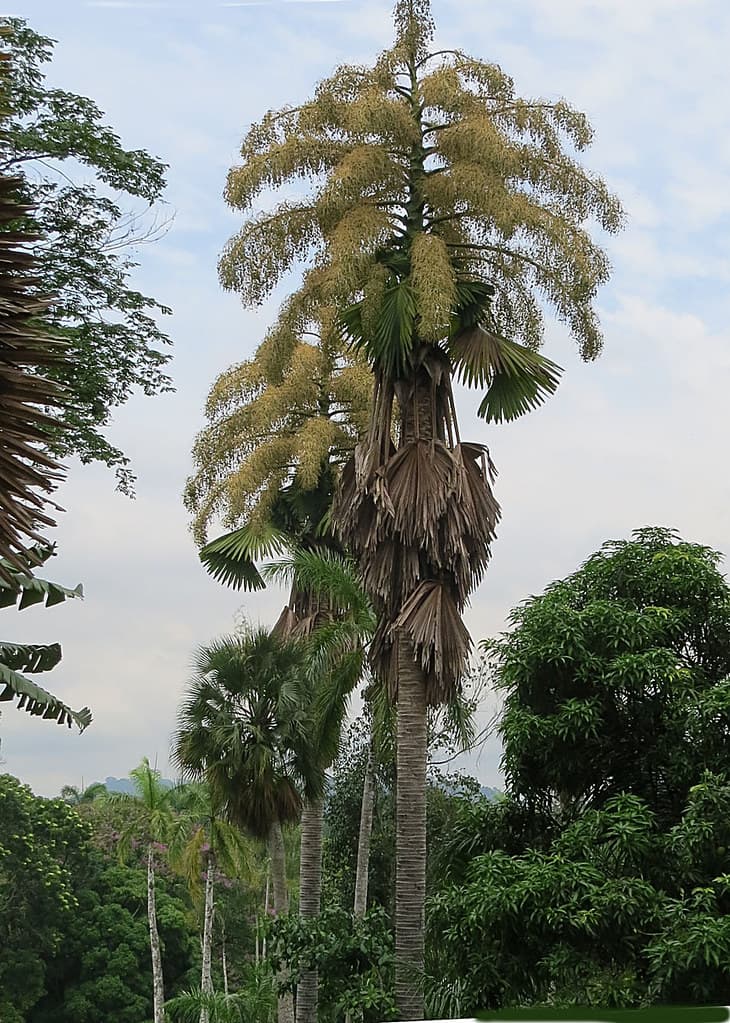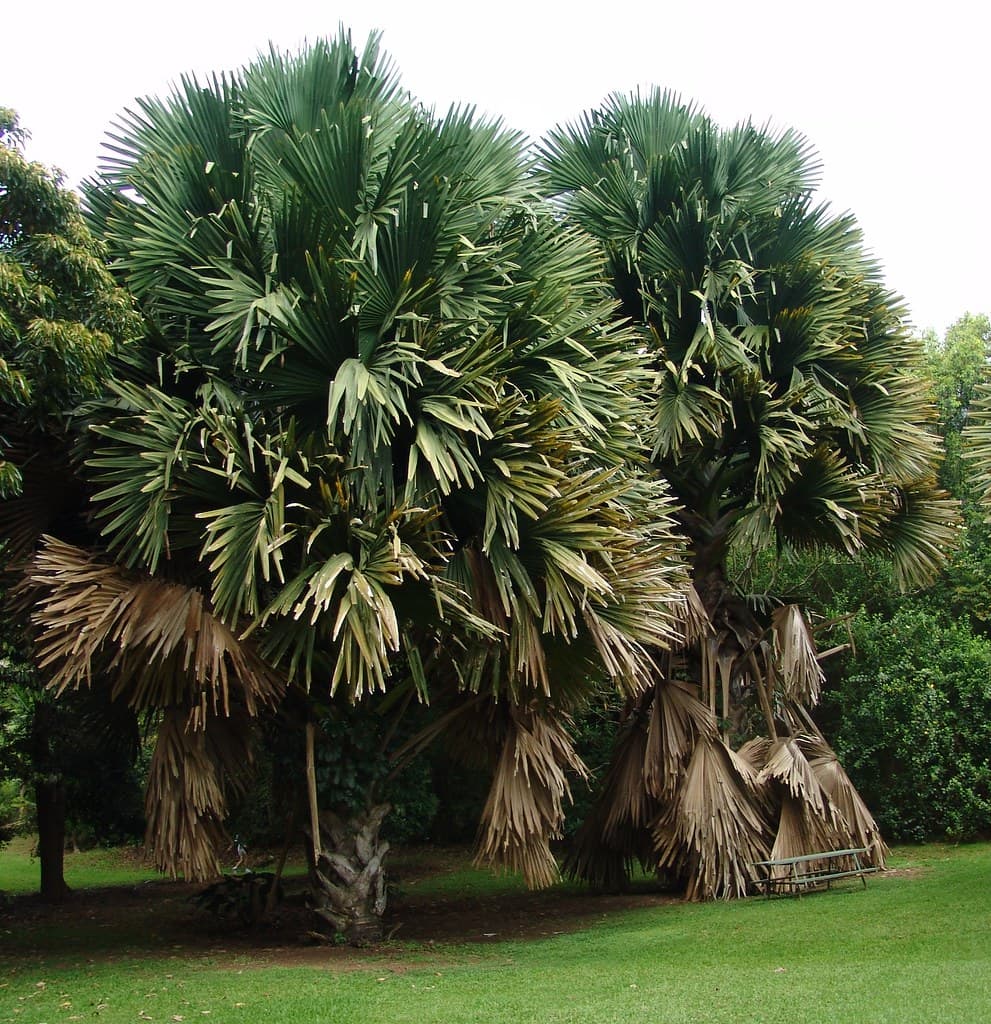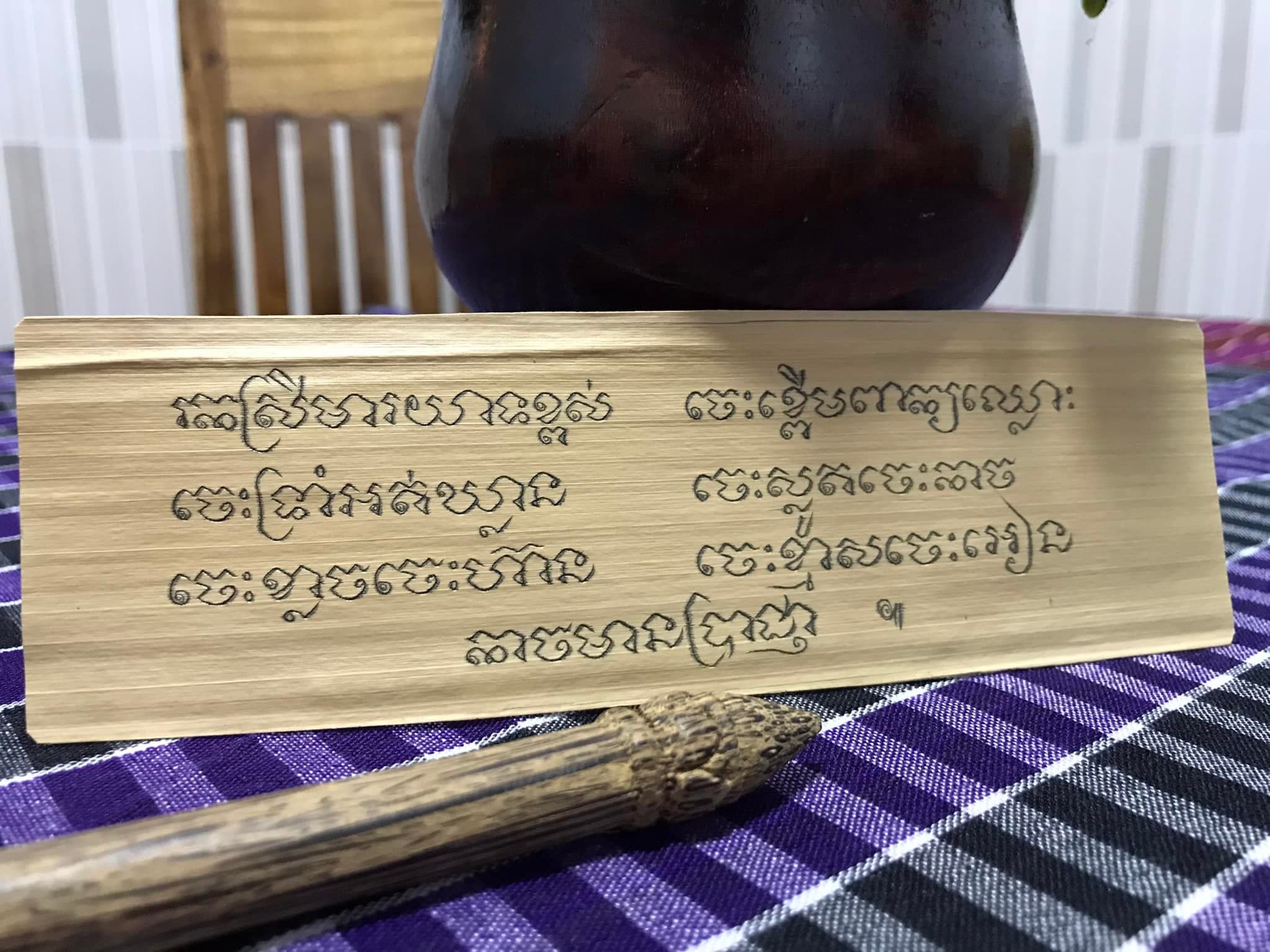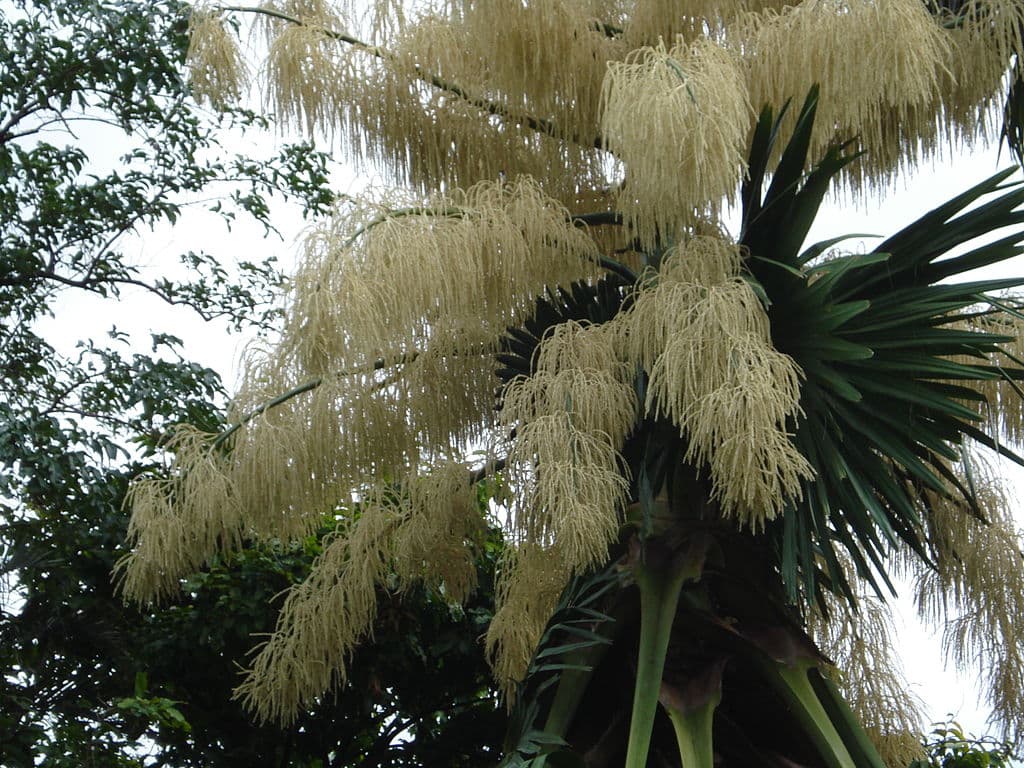Looking like a palm tree, talipot palm (ទ្រាំង) is a close relative to the family. Not a lot of people know about this plant while they are close to extinction. And many Cambodian people don’t even know our ancestors used them to make manuscripts in the olden days. So here I am today telling you a little bit about the talipot palms, and I hope you like it.
Appearance

A talipot palm tree is a wild plant in the palm family. It looks similar to a palm tree but with longer leaves and smaller fruits. A talipot palm is one of the largest palms that stands as tall as 25 meters with stems up to 1.3 meters. As you can see, it is a fan palm that has large palmate leaves that can be as big as 5 meters. Each tree can have up to 130 leaflets that provide many uses to people.
One of the most interesting things about talipot palm is that it is a flowering plant with the largest inflorescence in the world. The inflorescence is between 6 to 8 meters long, consisting of one to several million small flowers. However, it only flowers once in its life which is when it is 30 to 80 years old. After flowering, there will be thousands of dark green fruits that take one year to mature. Them, the palm dies shortly after bearing the fruits.
Distribution

Talipot palm is a palm species that is native to India and Sri Lanka, but it also grows in Cambodia, Myanmar, and Thailand. Talipot palms grow in big forests in Cambodia, especially in Kampung Thom and Kratie provinces. In Cambodia, talipot palm is almost extinct because there is no replanting. At the same time, the ones that grow in the wild are facing threats due to the continuous deforestation for agricultural land.
Uses

Almost every part of the talipot palm trees is useful in Cambodia as people can make many things from them. Below are some of the most common uses of this tree:
- Daily Items: Nowadays, we still make chopsticks, fans, hats, mats, utensils, walking sticks, and wooden swords from talipot palms.
- Fishing: The skin of their fruits is poisonous to fish but only causes the fish to lose consciousness. In low water season, fishermen throw the fruit skin into the water to poison the fish before collecting them. More than that, people also use their petioles to make fishing tools as well.
- Food: Their fruits can be used in stew and desserts.
- Manuscripts: When paper was not available, our ancestors cut the young leaves to boil and trimmed them to their desired size. Then they will carve writings on those leaves to create guides, stories, and many good advice for the next generations.
- Thatching: People weave the leaves together to make roofs and walls for houses.
- Weapons: In the old days, our ancestors made arrows from the petioles of the tree.
Related Post: Things You Don’t Know About The Penis Plants
